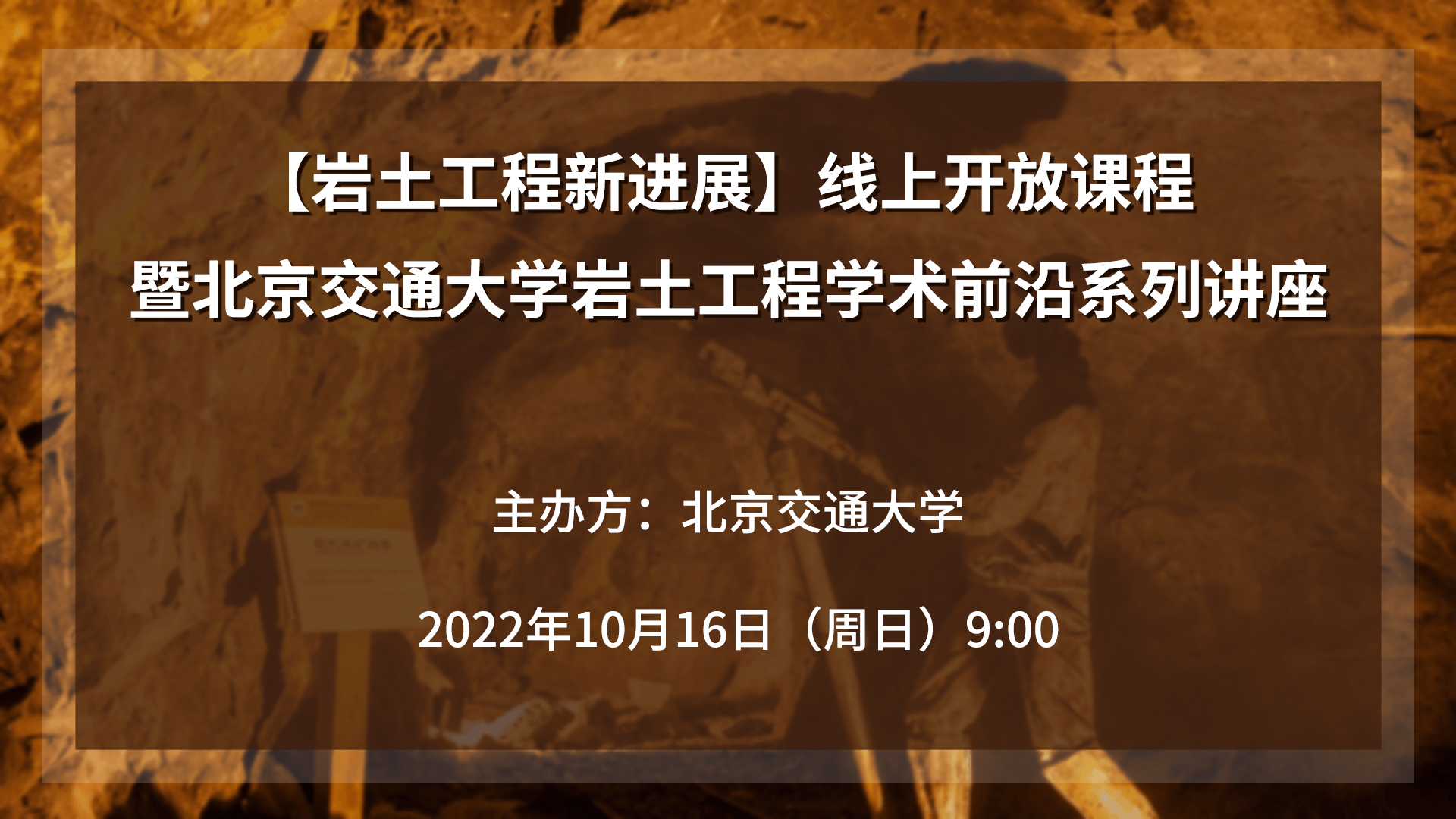学术讲座丨【岩土工程新进展】第6次线上讲座
●Lecture Organizer:
Professor LI Xu (xuli@bjtu.edu.cn),
Dr. DU Saizhao (dusz@bjtu.edu.cn),
Dr. WU Yongkang (ykwu@bjtu.edu.cn),
School of Civil Engineering, Beijing Jiaotong University.
●Contact Person: Dr. DU Saizhao(dusz@bjtu.edu.cn)
(Prof.)
Department of Civil & Environmental Engineering.
This webinar aims to report a summary review of the origins, concepts, and recent validations on the EDL on clay surfaces. In particular, the effects of clay mineral surfaces’ diversity, heterogeneity, and nanostructure (e.g., cavities in the tetrahedral sheet, broken bonds on edge surface) on the EDL behavior and structure are discussed, such as “inner sphere complexes”, “outer sphere complexes”, spillover of double layer, differences between interlayer complexes and EDL, and hidden EDL. Finally, interpretation of exemplary engineering phenomena is highlighted to reflect the essence and importance of understanding the EDL concepts and theories as well as the underlying sciences.
https://mp.weixin.qq.com/s/yq7QzTz028ZoeI6jT783gQ

线上开放课程第六讲
●讲座组织者:
李旭教授(xuli@bjtu.edu.cn),
杜赛朝(dusz@bjtu.edu.cn),
吴永康(ykwu@bjtu.edu.cn),
北京交通大学土木工程学院。
●联系人:杜赛朝(dusz@bjtu.edu.cn)
本次讲座旨在总结黏土表面EDL的起源、概念和最近验证。特别是讨论了黏土矿物表面的多样性、异质性和纳米结构(如四面体板中的空洞、边缘表面的断裂键)对EDL行为和结构的影响,如“内层复合物”、“外层复合物”,双层溢出,层间复合物和EDL之间的差异,以及隐藏的EDL。最后,强调对典型工程现象的解释,以反映理解EDL概念和理论以及基础科学的本质和重要性。





